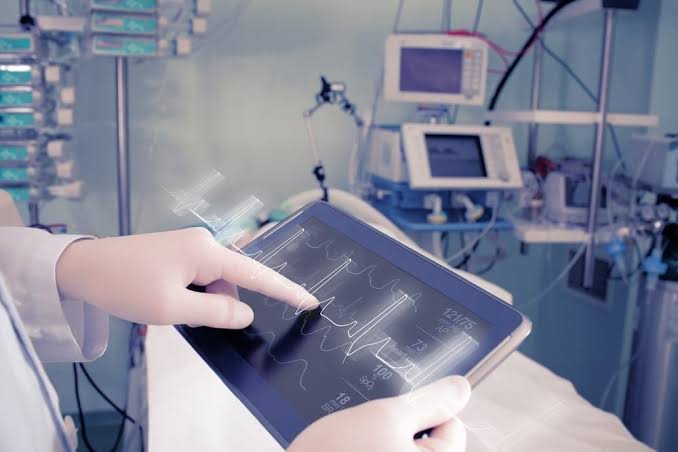Medical technology has advanced rapidly in recent years, transforming healthcare delivery and improving patient outcomes worldwide. As of 2025, new technologies are making diagnosis faster, treatment more precise, and healthcare more accessible. From artificial intelligence (AI)-powered diagnostic tools to wearable devices and robotic-assisted surgeries, these innovations are reshaping how both patients and healthcare providers experience medical care.
Advancements in medical technology are not just enhancing the quality of care but also making healthcare systems more efficient. With the growing emphasis on preventive care and personalized treatments, these innovations are helping address complex health challenges while reducing costs and improving patient satisfaction.
Artificial Intelligence and Machine Learning
AI and machine learning have become critical tools in healthcare, offering faster and more accurate diagnoses. AI algorithms can analyze medical imaging, such as X-rays and MRIs, with precision that rivals or surpasses human experts. This technology is widely used for detecting early signs of diseases like cancer, cardiovascular disorders, and neurological conditions.
Machine learning models also enable predictive analytics, which helps healthcare professionals anticipate disease outbreaks, identify patients at high risk, and develop personalized treatment plans. By processing large datasets from electronic health records, AI systems can offer insights that improve decision-making and patient care outcomes.
Wearable Health Devices
Wearable technology has grown into a major player in preventive healthcare. Devices such as smartwatches, fitness trackers, and continuous glucose monitors provide real-time monitoring of vital signs like heart rate, blood pressure, and oxygen levels. These devices help individuals track their health daily and alert users or healthcare providers when abnormal readings are detected.
For patients with chronic conditions, wearable devices enable remote monitoring, allowing doctors to assess patient health without frequent hospital visits. This has become particularly important in managing diseases such as diabetes, hypertension, and respiratory illnesses.
Telemedicine and Remote Care
Telemedicine has evolved from being a convenient option to a necessary healthcare solution. Advances in video conferencing, secure communication platforms, and remote diagnostic tools have made it possible for doctors to consult with patients virtually, reducing travel time and hospital congestion.
Remote care platforms now integrate with wearable devices and AI tools, enabling physicians to monitor patients in real time and adjust treatment plans as needed. This approach has been particularly valuable in rural or underserved areas where access to healthcare facilities is limited.
Robotic-Assisted Surgeries
Robotic surgery is revolutionizing how complex medical procedures are performed. Robots equipped with advanced imaging and precision tools assist surgeons in carrying out minimally invasive surgeries with enhanced accuracy. This reduces recovery time, minimizes complications, and improves overall surgical outcomes.
Systems like the Da Vinci surgical robot have become widely adopted for procedures such as heart surgery, urology, and gynecology. These systems provide surgeons with enhanced control and magnified 3D visualization, leading to better precision in delicate operations.
3D Printing in Medicine
3D printing technology has opened new possibilities in creating customized medical devices, implants, and even prosthetics. By using patient-specific data, 3D printers can create perfectly tailored devices, improving patient comfort and effectiveness.
This technology is also being explored for printing human tissues and organs for transplantation. While still in its experimental stages, bioprinting holds great promise for addressing organ shortages in the future.
Genomics and Personalized Medicine
Genomic sequencing has become faster and more affordable, leading to significant advancements in personalized medicine. By analyzing a patient’s genetic makeup, doctors can predict disease risks and tailor treatments based on individual genetic profiles.
This approach is particularly effective in cancer treatment, where targeted therapies are designed to attack specific genetic mutations in tumors. Personalized medicine reduces trial-and-error prescribing and increases the effectiveness of treatments.
Digital Health Records and Data Integration
Electronic Health Records (EHRs) are improving healthcare delivery by providing easy access to patient information. With better data integration, healthcare providers can collaborate seamlessly, ensuring that patients receive coordinated and efficient care.
Cloud-based systems and blockchain technology are being used to enhance data security, ensuring patient confidentiality while enabling faster sharing of medical information among authorized healthcare professionals.
Conclusion
Advances in medical technology are redefining the future of healthcare by improving accuracy, accessibility, and efficiency. AI-powered diagnostics, wearable devices, telemedicine, and robotic surgeries are enhancing patient outcomes while reducing costs and hospital visits. With the ongoing development of personalized medicine, 3D printing, and advanced data management, the healthcare industry is set to become even more innovative and patient-focused in the coming years.




Medical technology has rapidly transformed healthcare by 2025, enabling faster diagnoses, more precise treatments, and greater accessibility through innovations like AI-powered diagnostic tools, wearable devices, and robotic-assisted surgeries. These advancements not only improve patient outcomes but also enhance healthcare system efficiency by supporting preventive care and personalized treatments, ultimately addressing complex health challenges while lowering costs and boosting patient satisfaction worldwide.
Fascinating